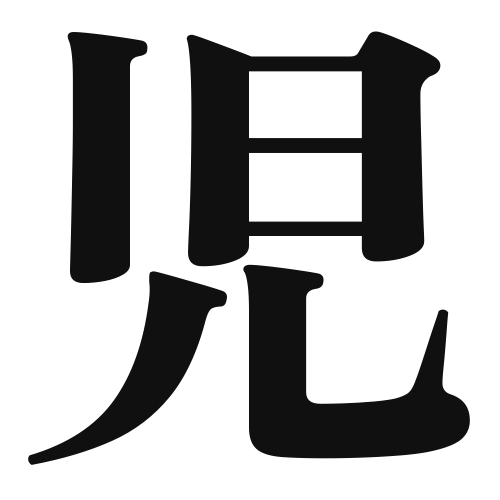1. Overview of Meaning
The kanji “児” (pronounced “ji” or “ni”) primarily means “child” or “infant.” It is often used to refer to young children or offspring in a general sense.
2. Formation and Radical
Formation of the Kanji: The kanji “児” is classified as a pictogram, originally depicting a child or a small figure. It represents the concept of youth and innocence.
Radical: The radical for “児” is “儿” (pronounced “er”), which also relates to the idea of a person or a child.
3. Examples of Usage
Common Words and Phrases: Some frequently used words that include “児” are:
- 児童 (じどう, jidou) – “child” or “juvenile”
- 乳児 (にゅうじ, nyuuji) – “infant”
Example Sentences in Daily Conversation:
- 彼は小さな児を抱いています。 (かれはちいさなじをだいています。) – “He is holding a small child.”
- 児童文学はとても面白いです。 (じどうぶんがくはとてもおもしろいです。) – “Children’s literature is very interesting.”
4. Synonyms and Antonyms
Similar Kanji: A similar kanji is “子” (こ, ko), which also means “child” but can refer to a broader range of meanings, including “offspring” or “young.” The difference lies in the nuance, where “児” often emphasizes the young age.
Antonyms: An antonym could be “老” (ろう, rou), meaning “old” or “elderly,” which represents the opposite stage of life compared to “児.”
5. Cultural and Historical Background
Relation to Japanese Culture: The concept of “児” is deeply embedded in Japanese culture, where children are often seen as symbols of hope and the future. Festivals and traditions often celebrate children.
Proverbs and Idioms: One common saying is “子は宝” (こはたから, ko wa takara), which translates to “Children are treasures,” highlighting the value placed on children in society.
